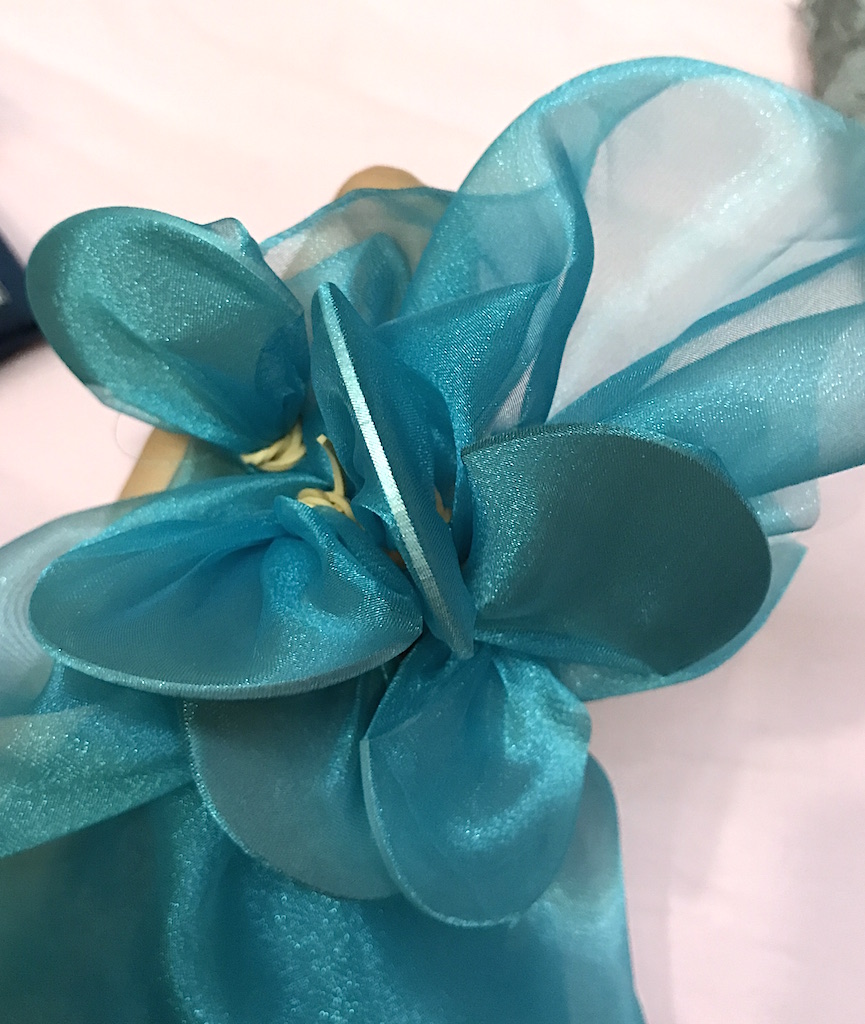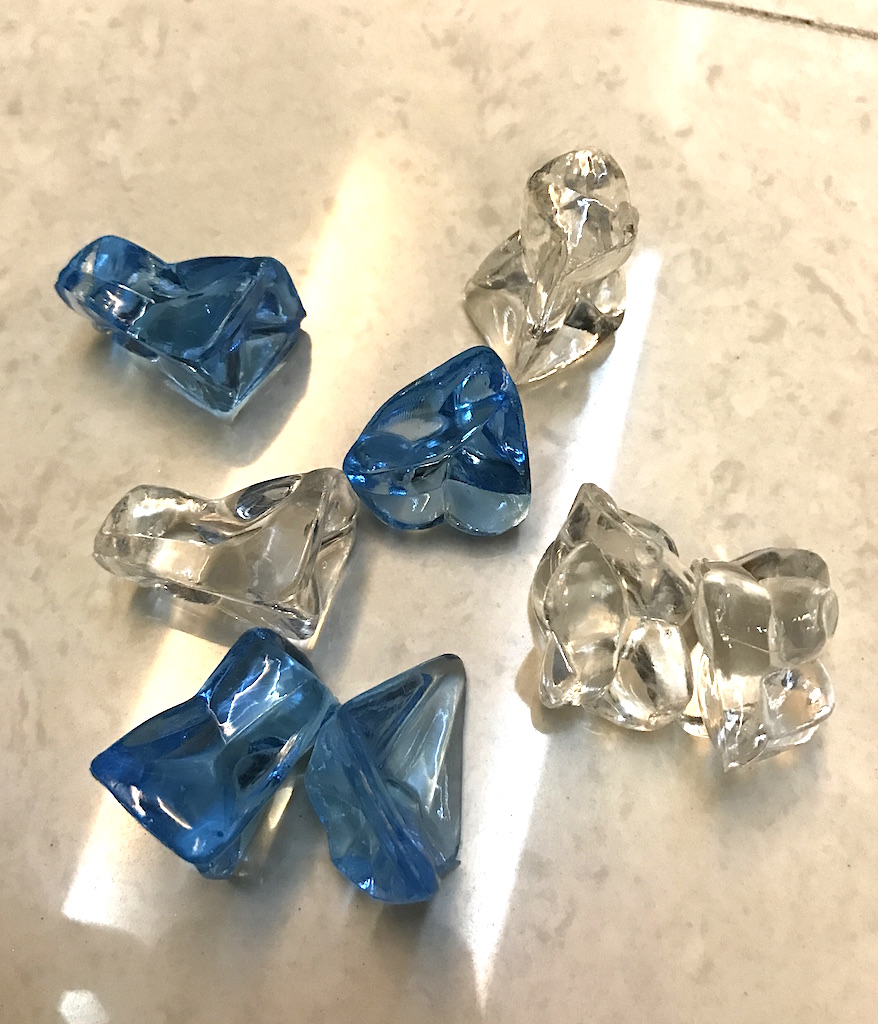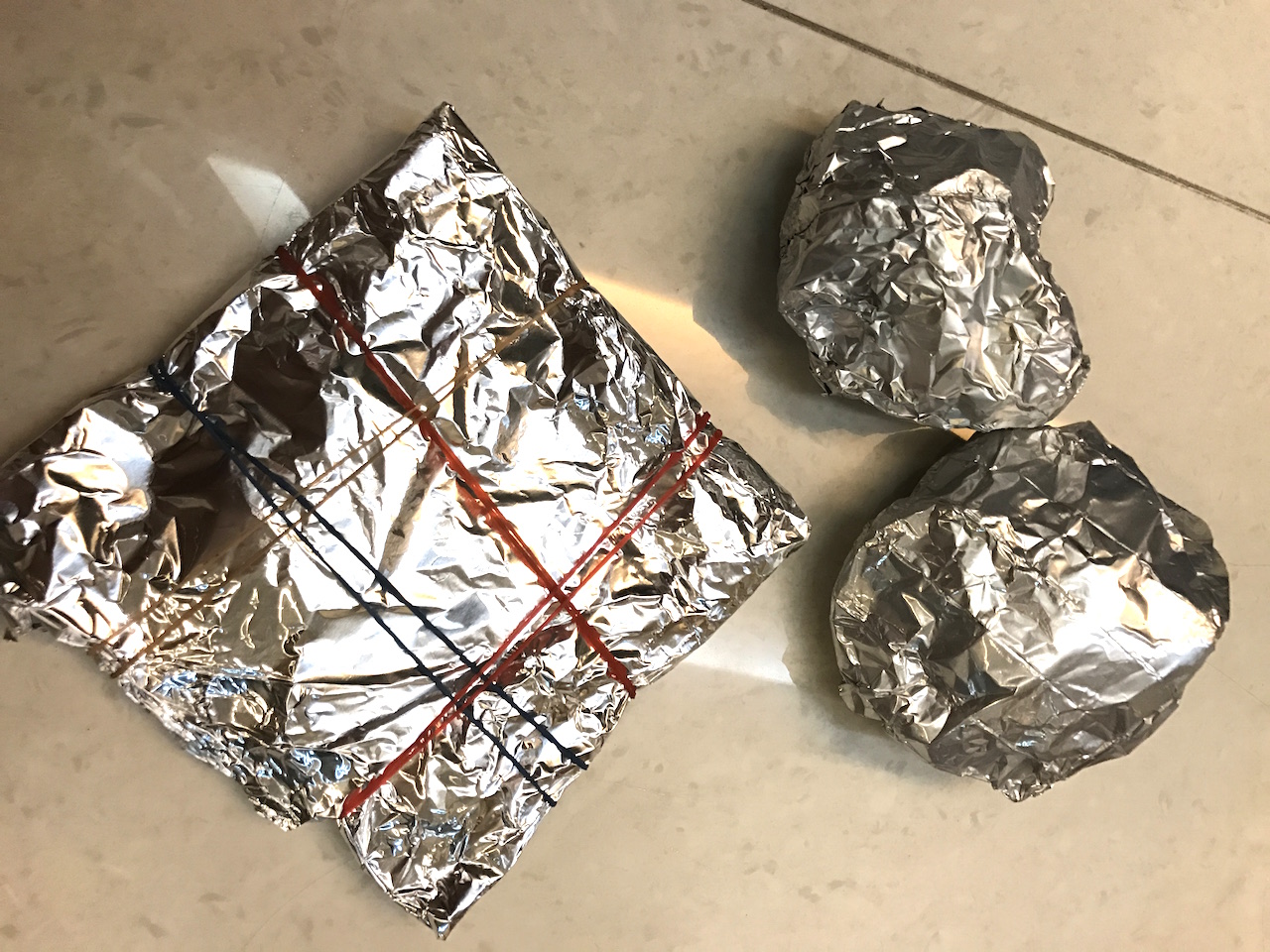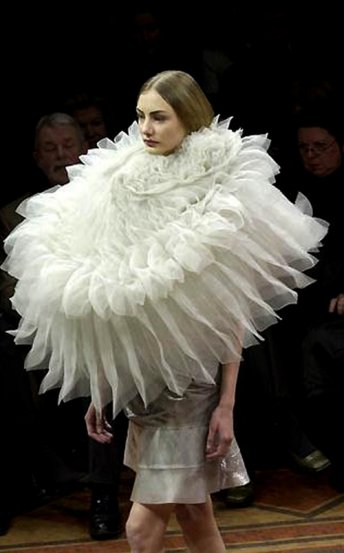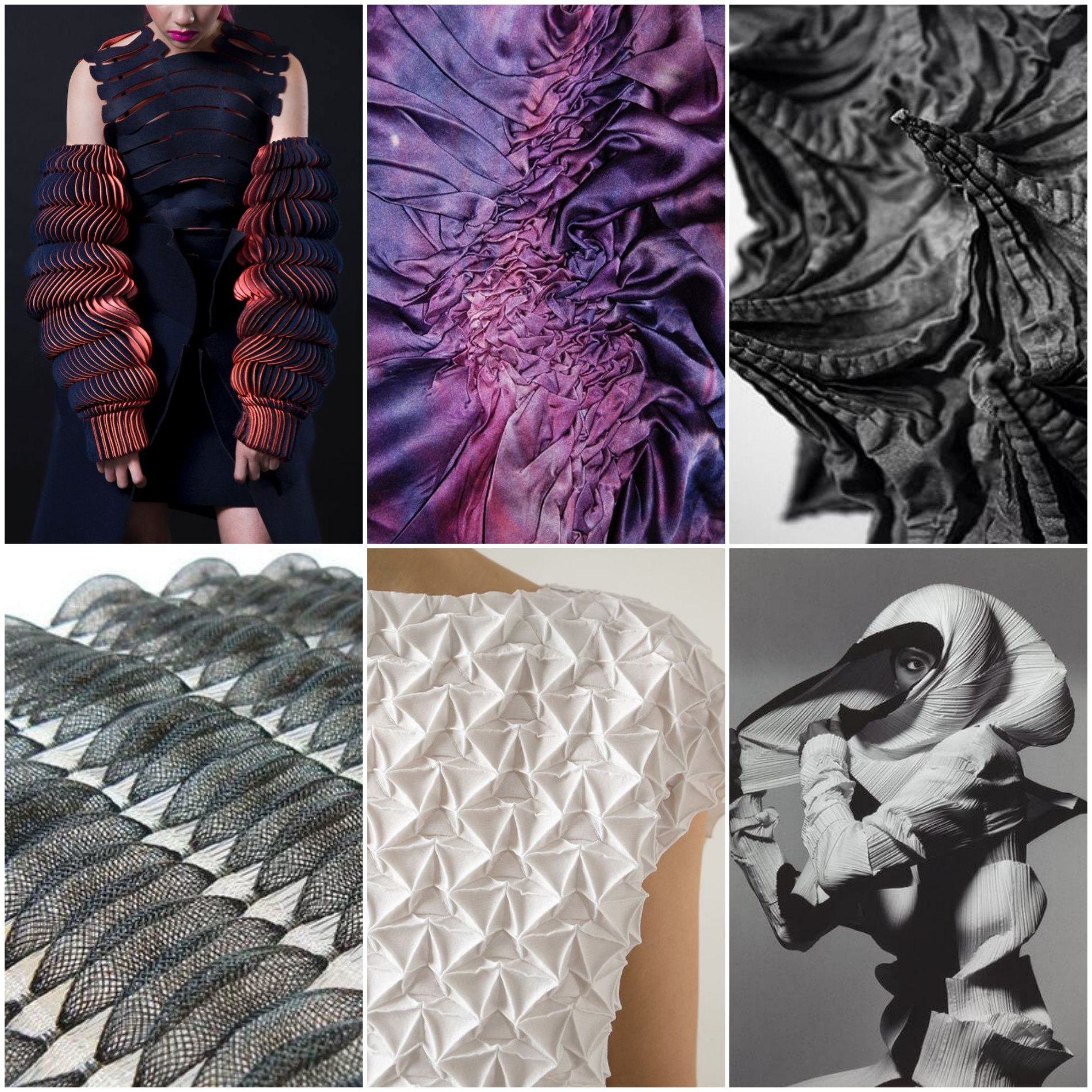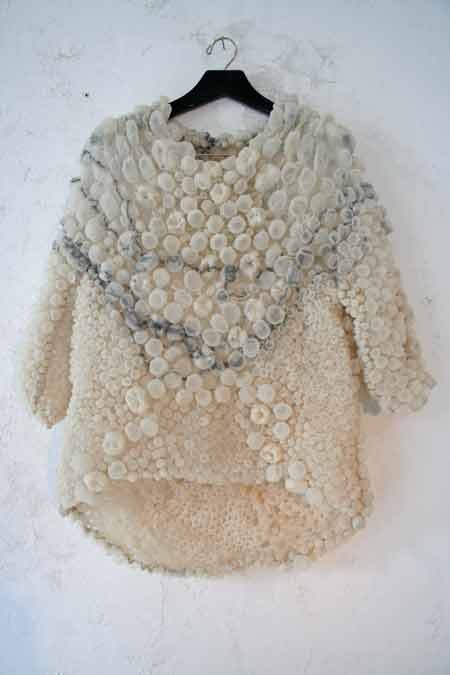
Thermoplastics
What is Thermoplastics:
Materials needed: Boiling water in pot, Silk organza, small rubber bands, aluminium foil, small objects to wrap fabric with (fabric will retain this shape) e.g. marbles, stones, big beads, acrylic shapes.
Examples shown in class
How it’s done:
Step 1: Cut the organza cloth into the desired size.
Step 2: Place objects onto cloth. Wrap them up with the organza fabric individually and tie a rubber band around the shape tightly.
Step 3: Repeat this procedure a couple of times, depending on how much fabric you want to “shape”.
Step 4: Once you’re done, wrap an aluminium foil around the objects and put it in the boiling water. Leave it there for 1.5 hours. Make sure the aluminium balls do not float.
Step 5: After 1.5 hours, take the aluminium ball out of the pot. Remove the aluminium foil and leave it to dry.
Step 6: Once it is fully dried, remove the rubber bands and objects.
School exercise
Trying technique at home
Application:
Personal Reflection: This technique is definitely one of my favourites because it the end products are unique and high fashion!
The process is not easy because sometimes the organza doesn’t take effect even with the boiling, perhaps the objects used were too flat/ not 3D enough.
Even though it’s time consuming and is very much trail and error (you might not get the ideal shape you want), however, it was a very fun process nonetheless, and I’m glad I got to try this out!
______________________________
Vacuum Forming
What is vacuum forming: Vacuum forming is a simplified version of thermoforming, where a sheet of plastic is heated to aforming temperature, stretched onto a single-surface mold, and forced against the mold by a vacuum. This process can be used to form plastic into permanent objects such as turnpike signs and protective covers.
How it’s done:
Reflection: Vacuum forming is a very easy process, and all is needed is the machine, an item to vacuum and hard plastics. This technique is practical as vacuum forming can be used for so many different items in packaging design. I will definitely put this into good use for future school projects!











